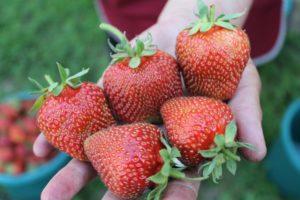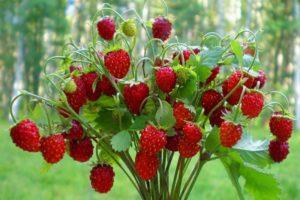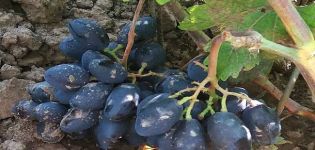Description and subtleties of growing strawberries of the Symphony variety
Experienced strawberry growers pay attention to the timing of their ripening. By planting different varieties, you can achieve continuous fruiting for several months. Symphony strawberries are considered to be an excellent representative of the late species. Received in the late 80s of the last century in Scotland. As a result of crossing Rhapsody and Holiday, Symphony appeared, a variety that has remained popular and in demand for several decades.
Description and characteristics of strawberry Symphony
Variety Symphony has a powerful bush with a large number of hard dark leaves, located on high (up to 40 cm) stems. The root system is strong, branched, able to penetrate into the soil to a depth of 30 cm. Fruit stalks and creeping shoots. Peduncles are powerful, multi-flowered. Berries in the phase of full ripeness are bright red, uniform in color, fleshy, large (up to 40 g). Their shape resembles a cone.
Strawberry Symphony belongs to the cold-resistant varieties recommended for growing in most regions of Russia. It is heat and drought resistant. Long-term fruiting. In the southern regions it begins in May, in the central regions - from mid-June to the end of July. The variety is grown on an industrial scale.
Advantages and disadvantages of the variety
The pluses of the variety include:
- excellent taste of berries;
- high productivity;
- long periods of fruiting;
- drought resistance;
- winter hardiness;
- increased keeping quality and transportability;
- resistance to major diseases.
Experts cannot name the shortcomings of the Symphony strawberry. They only express regret that the variety is not remontant and does not yield a crop several times per season.
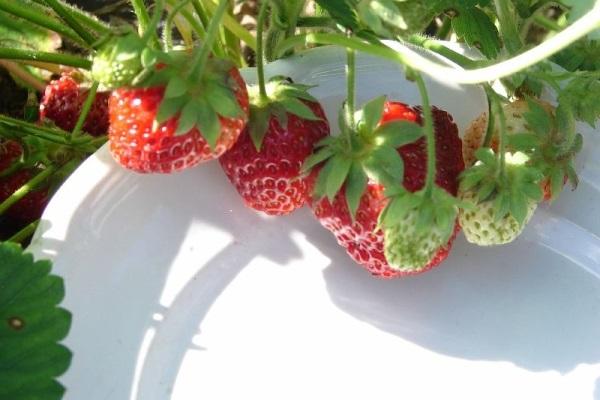
The subtleties of growing
To grow strong and productive strawberries, you need to know the rules for choosing planting material, the subtleties of agricultural technology and plant care.
Selection and preparation of the landing site
The place for planting strawberries must meet a number of requirements:
- light fertile soils with low groundwater levels;
- site protection from drafts and northern winds;
- slope to the south;
- soil cleared of weeds and pests.
Preparation of planting material
Its rooting and further growth depends on the choice of planting material. High-quality seedlings have a developed root system, strong, strong shoots with healthy leaves.They should be free of stains, plaque and wrinkles. Healthy roots are light, without signs of disease.
For better survival, they must be immersed in a growth stimulator solution for 30 minutes.
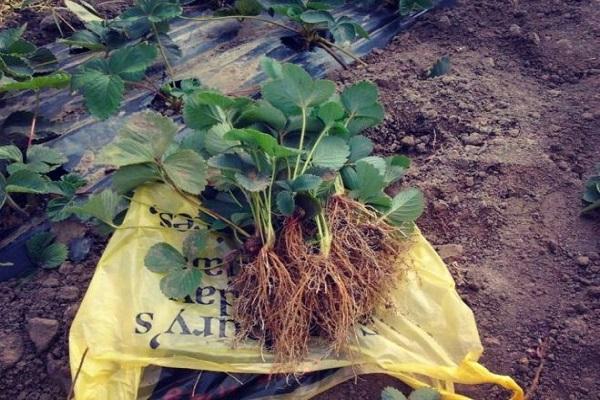
Landing rules
When planting strawberries of the Symphony variety, a number of actions should be performed:
- Prepare holes at a distance of 35 cm from each other for a single line arrangement and 40 cm for a two-line arrangement.
- Add a substrate of peat and humus mixed in a 1: 1 ratio.
- Spill holes.
- Pinch the longest root to stimulate lateral growth.
- Remove excess leaves, leaving 2-3 strongest ones.
- Plant the seedlings so that the growing point is above the soil surface.
- Drizzle again.
- Mulch the soil.

Strawberry Care Tips
The longevity of strawberry bushes and their yield depend on how the plants are cared for after planting.
Watering methods
Strawberry Symphony requires watering throughout the season. In the spring, it is carried out in the morning in the form of sprinkling, so that by the evening the soil and leaves dry out and a favorable environment for the development of fungal diseases does not arise.
After the buds appear, watering must be carried out "under the root" or by drip. The soil is moistened to a depth of 25 cm. Irrigation water should be soft, moderately warm (about 18 ⁰С).
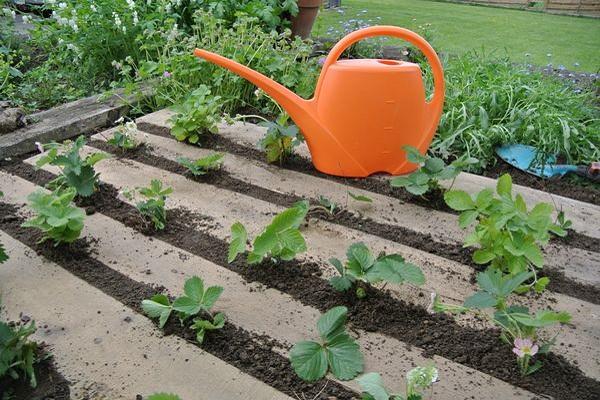
The moistening of the beds is carried out at the following frequency:
- in spring - weekly;
- in summer - once every 3 days;
- in the fall - three times a month.
Fertilizer
Periodic feeding of Symphony strawberries leads to an improvement in the condition of the bushes, an increase in the size of berries. Experts recommend applying fertilizer according to the scheme:
- 1st spring feeding - 25 g of nitroammophoska is dissolved in 10 liters of water and 0.5 liters are applied under one plant;
- 2nd spring top dressing - organic (mullein is bred in a ratio of 1:10 and consumed 1 liter per plant);
- summer, during the period of setting berries - potassium-phosphorus + ash;
- after harvest - organic and mineral fertilizing.
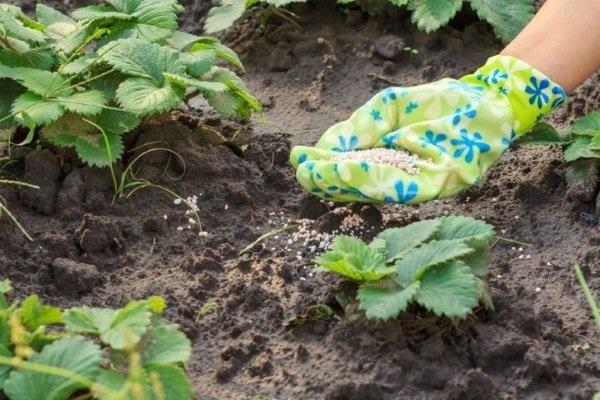
Mulching and loosening
Mulching the soil after watering, loosening and removing weeds allows you to maintain the structure of the soil, reduce moisture evaporation, and protect the roots from overheating. Sawdust, grass, straw, needles, agro-cloth are used as mulch. Thanks to the shelter of the soil, the fruiting of strawberries Symphony can occur at an earlier date.
What you need to know about winter care
Despite the high frost resistance of the Symphony strawberry, it should be prepared for winter. To do this, the beds are additionally mulched with straw, dry leaves, bringing the layer to 10-15 cm. Thanks to this shelter, snow lingers in the beds in winter, the roots are reliably protected from freezing.

Protecting plants from pests and diseases
Although the Symphony strawberry belongs to varieties resistant to fungal diseases, when agricultural technology is violated and in adverse climatic conditions, it is sometimes affected by powdery mildew, black rot, wilting. For treatment, both traditional methods and chemical preparations (fungicides) are used.
Among the main pests of strawberries are nematodes, leaf beetles, red ants, and snails.
In order to prevent the appearance of diseases and insect pests, it is recommended to carry out a two-fold treatment of the soil with a solution of copper sulfate - in spring and autumn.

Collection and storage of strawberry harvest
The harvest period lasts up to two months. The berries are resistant to precipitation and weather changes, do not deteriorate in the phase of maturity for several days while on the bush. After collecting, they are placed in wooden containers and transferred to a cool place. The variety is perfectly transported and retains its commercial qualities for 5-7 days after harvest. The berry's purpose is universal. Can be used both fresh and for processing.
